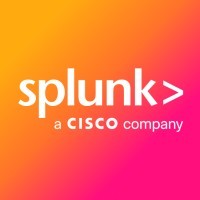Next-Gen SOAR for Hyperautomation
Focus on Setting Strategy,
Not on Putting Out Fires.
Put efforts on improving your security strategy, rather than constantly patching holes.
Mindflow transforms SecOps with GenAI-powered, No-code automation, letting teams shift from repetitive ClickOps to impactful security work. Build Flows that cut through busywork and let you focus on the real threats, not the clicks.
Mindflow transforms SecOps with GenAI-powered, No-code automation, letting teams shift from repetitive ClickOps to impactful security work. Build Flows that cut through busywork and let you focus on the real threats, not the clicks.
open_in_full

The daily struggle of an under-equipped SOC teams
Too many alerts
Security teams are bombarded with 100 to 300 alerts every day, making it challenging to cut through the noise and identify the real threats that demand attention.
Too many alerts
Security teams are bombarded with 100 to 300 alerts every day, making it challenging to cut through the noise and identify the real threats that demand attention.
Talent scarcity
Finding qualified cybersecurity talent is a major challenge. With a projected global cybersecurity workforce shortage of 3.5 million by 2025, organizations struggle to build effective security teams.
Talent scarcity
Finding qualified cybersecurity talent is a major challenge. With a projected global cybersecurity workforce shortage of 3.5 million by 2025, organizations struggle to build effective security teams.
Lack of automation
Security analysts spend at least 30% of their workday on routine tasks like sorting through alerts and adding details. It slows down problem-solving, increases the risk of errors, and —let’s be real— nobody signed up for boring work.
Lack of automation
Security analysts spend at least 30% of their workday on routine tasks like sorting through alerts and adding details. It slows down problem-solving, increases the risk of errors, and —let’s be real— nobody signed up for boring work.
Introducing Mindflow
Ditch ClickOps, Embrace Automation,
Make Your SecOps Job Impactful.
Introducing Mindflow
Ditch ClickOps, Embrace Automation,
Make Your SecOps Job Impactful.
Elevate
Your Cybersecurity Posture.
By lowering the entry barrier with a intuitive UX and powerful AI features, Mindflow empowers users to build automation independently. This approach strengthens security by fostering a culture of automation that extends beyond the teams.
Complete alert coverage
for focus on critical alerts only
Automate threat detection, enrichment, and triage to reduce noise and prioritize critical alerts with 450+ ready-to-go templates.
Improve MTTA and MTTR
Automate the processing and normalization of large datasets from multiple sources to generate standardized and concise tickets for a more efficient response.
Minimize errors
Apply consistent processes through automation with full observability, detailed audit logs for standard and AI-driven workflows, leaving no room for errors or oversights.
Elevate
Your Cybersecurity Posture.
By lowering the entry barrier with a intuitive UX and powerful AI features, Mindflow empowers users to build automation independently. This approach strengthens security by fostering a culture of automation that extends beyond the teams.
Complete alert coverage
for focus on critical alerts only
Automate threat detection, enrichment, and triage to reduce noise and prioritize critical alerts with 450+ ready-to-go templates.
Improve MTTA and MTTR
Automate the processing and normalization of large datasets from multiple sources to generate standardized and concise tickets for a more efficient response.
Minimize errors
Apply consistent processes through automation with full observability, detailed audit logs for standard and AI-driven workflows, leaving no room for errors or oversights.
Break silos,
Build the Best Ecosystem.
Mindflow offers 4,000+ Native integrations across the entire technology stack, ensuring robust and seamless connectivity. This enables companies to leverage a full best-of-breed strategy to enhance established processes and experiences.
Maximize each tool's capabilities
Optimize the use of existing best-of-breed tools from your stack to ensure peak performance and full adoption by your teams.
Add agility to your stack
Mindflow has advanced capabilities to industrialize new integrations and seamlessly connect every service from your stack within 7 business days, keeping everything streamlined.
Simplify team communication and reporting
Connect your flows to communication tools to share information and request human actions, synchronously or asynchronously, aligning teams for enhanced efficiency.
Break silos,
Build the Best Ecosystem.
Mindflow offers 4,000+ Native integrations across the entire technology stack, ensuring robust and seamless connectivity. This enables companies to leverage a full best-of-breed strategy to enhance established processes and experiences.
Maximize each tool's capabilities
Optimize the use of existing best-of-breed tools from your stack to ensure peak performance and full adoption by your teams.
Add agility to your stack
Mindflow has advanced capabilities to industrialize new integrations and seamlessly connect every service from your stack within 7 business days, keeping everything streamlined.
Simplify team communication and reporting
Connect your flows to communication tools to share information and request human actions, synchronously or asynchronously, aligning teams for enhanced efficiency.
Revolutionize
Your Workday with GenAI.
Mindflow puts GenAI at the heart of cybersecurity operations to take advantage of the benefits brought by the revolution of AI and LLM, making it accessible, actionable, and secure. Automate the ordinary, achieve the extraordinary.
Elimate mundane, boring tasks
Free your SecOps team from tedious and repetitive tasks with GenAI: initial assessment and triage, reports writing, flows documentation maintenance… Let your team focus on where its expertise is needed.
Focus on strategic initiatives
Let the AI handle tasks like analyzing large datasets, extracting insights, or normalizing data, and redirect efforts to high-impact projects such as threat modeling, threat hunting, risk coverage, and remediation strategies.
Gain time for learning and development
Use GenAI to transform your ideas into functional flows by simply describing them. Test and iterate quickly to enhance your strategy and focus on innovation.
Revolutionize
Your Workday with GenAI.
Mindflow puts GenAI at the heart of cybersecurity operations to take advantage of the benefits brought by the revolution of AI and LLM, making it accessible, actionable, and secure. Automate the ordinary, achieve the extraordinary.
Elimate mundane, boring tasks
Free your SecOps team from tedious and repetitive tasks with GenAI: initial assessment and triage, reports writing, flows documentation maintenance… Let your team focus on where its expertise is needed.
Focus on strategic initiatives
Let the AI handle tasks like analyzing large datasets, extracting insights, or normalizing data, and redirect efforts to high-impact projects such as threat modeling, threat hunting, risk coverage, and remediation strategies.
Gain time for learning and development
Use GenAI to transform your ideas into functional flows by simply describing them. Test and iterate quickly to enhance your strategy and focus on innovation.
Over 316,495 hours of work saved through 1,582,478 playbook runs for our valued clients.
Over 316,495 hours of work saved through 1,582,478 playbook runs for our valued clients.
Whatever your use case,
we have a template designed for you.

Phishing Detection
Alert Enrichment
Triage & Deduplication
Incident Response
Vulnerability Management
Compliance & Reporting
Threat Hunting
Discover more use cases:
The most connected platform ever created
A catalog of
4,000+
integrations with
100%
API coverage.
Slack Web API
Sends a message to a channel
Share a public message
ANSIBLE galaxy apit
Get collection
VirusTotal
Analyze URL
Verify URL reputation

DATADOG full api
Get an event
ATLASSIAN jira
Create issue
URLSCAN.IO
Submit URL
Get URL reputation
crowdstrike api
Update Firewall Policies by…
rapid7 insightvm APi
Asset Policy Overrides
elastic compute cloud
Stops an Amazon EBS…
fortinet cloud
Get Audit log
greynoise entreprise api
GNQL Query
harfanglab api
Data threat intelligence yara…
lancework api 2.0
List Reports
microsoft graph - security
Update the alerts in security
Netskope api
Get DLP Alerts in Netskope
have i been pwned
Search an Email in HIBP
sophos - endpoint api
Scan an endpoint
OKTA API
Delete User
OPENAI API
Creates a completion for..
splunk cloud admin API
Describe the allowlist with it…
JAMF PRO API
Post a command for creation..
shodan rest api
Request Shodan to crawl an…
vectra API
get /search/detections
wallix bastion rest API
Add a password change policy
sumo logic API
Allowlist CIDRs/IP addresses
tenable vulnerability management
Export scan
wiz API
Get Open Issues Trend Card…
zendesk API
Create a Zendesk Ticket
trend micro network security api
Create a Firewall Rule Share
Servicenow trouble ticket
Updates partially a…
Best-in-class in the Hyperautomation framework
To fully achieve Hyperautomation, we believe that an automation platform must be prominent in 5 categories: Hyper Scalability, Hyper Integrations, Hyper Ops, Hyper Observability and Hyper Usability.

“
We have never encountered a platform like Mindflow, that allows SOC & IT teams to automate such a wide range of use cases so easily. The platform has almost no limits and can adapt to any environment.

Eric Lexcellent
Security Operations Director @ Doctolib
Subscribe to innovation.
Whatever your use case,
we have a template designed for you.
Explore canvas
Continuous Network Vulnerability Monitoring
Whatever your use case,
we have a template designed for you.
Explore canvas
Continuous Network Vulnerability Monitoring
The most connected platform ever created
A catalog of
4,000+
integrations, all of them with
100%
coverage of their API calls.
Slack Web API
Sends a message to a channel
Share a public message
ANSIBLE GALAXY APIT
Get collection
VIRUS TOTAL
Analyze URL
Verify URL reputation
SENTINELONE
Lock user device
Isolate a machine in quarantine
URLSCAN.IO
Submit URL
Get URL reputation
ATLASSIAN JIRA
Create issue
VIRUS TOTAL
Retrieve URL analysis
Get URL reputation

DATADOG FULL API
Get an event
FORTINET CLOUD
Get Audit log
ELASTIC COMPUTE CLOUD
Stops an Amazon EBS…
RAPID7 INSIGHTVM API
Asset Policy Overrides
crowdstrike api
Update Firewall Policies by…
SHODAN REST API
Request Shodan to crawl an…
VECTRA API
get / search / detections
WALLIX BASTION REST API
Add a password change policy
SUMO LOGIC API
Allowlist CIDRs/IP addresses
Tenable VULNERABILITY
MANAGEMENTExport scan
Wiz API
Get Open Issues Trend Card…
Share a public message
ZENDESK API
Create a Zendesk ticket
ZSCALER CLOUD SERVICE API
Adds a URL Filtering Policy
SERVICE TROUBLE TICKET
Updates partially a …
TREND MICRO NETWORK
SECURITY APICreate a Firewall Rule Share
SERVICE TROUBLE TICKET
Updates partially a …
GREYNOISE ENTREPRISE API
GNQL Query
HARFANGLAB API
Data threat intelligence yara…
KANDJI API
Cancel Lost Mode
LANCEWORK API 2.0
List Reports
MICROSOFT GRAPH
Update the alerts in security
NETSKOPE API
Get DLP Alerts in Netskope
HAVE I BEEN PWNED
Search an Email in HIBP
SOPHOS - ENDPOINT API
Scan an endpoint
OKTA API
Delete User
OPENAI API
Creates a completion for…
SPLUNK CLOUD ADMIN API
Describe the allowlist with it…
JAMF PRO API
Post a command for creation..
The most connected platform ever created
A catalog of
4,000+
integrations, all of them with
100%
coverage of their API calls.
Slack Web API
Sends a message to a channel
Share a public message
ANSIBLE GALAXY APIT
Get collection
VIRUS TOTAL
Analyze URL
Verify URL reputation
SENTINELONE
Lock user device
Isolate a machine in quarantine
URLSCAN.IO
Submit URL
Get URL reputation
ATLASSIAN JIRA
Create issue
VIRUS TOTAL
Retrieve URL analysis
Get URL reputation

DATADOG FULL API
Get an event
FORTINET CLOUD
Get Audit log
ELASTIC COMPUTE CLOUD
Stops an Amazon EBS…
RAPID7 INSIGHTVM API
Asset Policy Overrides
crowdstrike api
Update Firewall Policies by…
SHODAN REST API
Request Shodan to crawl an…
VECTRA API
get / search / detections
WALLIX BASTION REST API
Add a password change policy
SUMO LOGIC API
Allowlist CIDRs/IP addresses
Tenable VULNERABILITY
MANAGEMENTExport scan
Wiz API
Get Open Issues Trend Card…
Share a public message
ZENDESK API
Create a Zendesk ticket
ZSCALER CLOUD SERVICE API
Adds a URL Filtering Policy
SERVICE TROUBLE TICKET
Updates partially a …
TREND MICRO NETWORK
SECURITY APICreate a Firewall Rule Share
SERVICE TROUBLE TICKET
Updates partially a …
GREYNOISE ENTREPRISE API
GNQL Query
HARFANGLAB API
Data threat intelligence yara…
KANDJI API
Cancel Lost Mode
LANCEWORK API 2.0
List Reports
MICROSOFT GRAPH
Update the alerts in security
NETSKOPE API
Get DLP Alerts in Netskope
HAVE I BEEN PWNED
Search an Email in HIBP
SOPHOS - ENDPOINT API
Scan an endpoint
OKTA API
Delete User
OPENAI API
Creates a completion for…
SPLUNK CLOUD ADMIN API
Describe the allowlist with it…
JAMF PRO API
Post a command for creation..
We have never encountered a platform like Mindflow, that allows SOC & IT teams to automate such a wide range of use cases so easily. The platform has almost no limits and can adapt to any environment.


Eric Lexcellent
Security Operations Director @ Doctolib
Best-in-class in the Hyperautomation framework
To fully achieve Hyperautomation, we believe that an automation platform must be prominent in 5 categories: Hyper Scalability, Hyper Integrations, Hyper Ops, Hyper Observability and Hyper Usability.


Subscribe to innovation.
Subscribe to innovation.

















